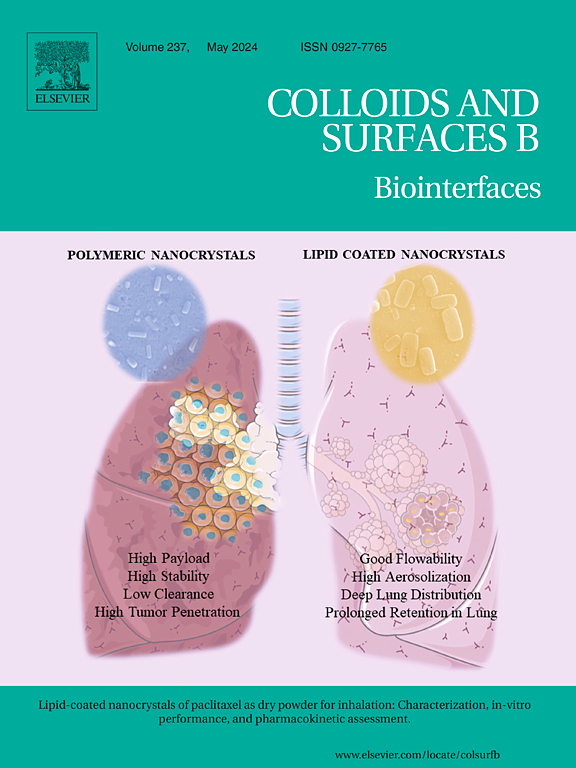Formulation and heat stability of self-assembled O/W food-grade microemulsions formulated with bile salts or tween 80 as surfactants
IF 5.4
2区 医学
Q1 BIOPHYSICS
引用次数: 0
Abstract
Recently, there has been a growing interest in developing food-grade (F-G) microemulsions (MEMs) with potential applications in the food industry, such as a green solvent for extracting bioactive compounds or as a vehicle to solubilize low-polar bioactive compounds. Therefore, this work aimed to create F-G MEMs using a low-energy titration method, bile salt or tween 80 as surfactants, and F-G ingredients like acetic acid, olive oil, limonene, and coconut oil. For this purpose, 56 formulations were assessed, from which 14 created oil-in-water (O/W) one-phase Winsor type IV microemulsions. All the F-G MEMs were transparent (turbidity ≤ 0.17 %) with watery densities (1.00 – 1.034 g/cm3) and viscosities (∼1–5 mPa・s). The MEMs formulated with bile salts had a neutral pH (7.75) and could only solubilize small lipids like limonene (2 % maximum). In contrast, those MEMs using tween 80 as surfactant showed an acidic pH (∼1–5.9) and could solubilize triglyceride-based lipids (0.2 % maximum) and limonene (4 % maximum) at surfactant concentrations as low as 1 %. The F-G MEMs were successfully created using the low-energy titration method, although the time to form each MEM varied significantly. The MEMs formulated with bile salts were self-assembled in ∼12 h, whereas the formation of MEMs with tween 80 required up to 28 days. Nevertheless, once the MEMs were formed, they presented extraordinary stability to high-shear stirring (15,600 rpm for 5 min) and heating (up to 150 ºC) without turning cloudy or showing a phase separation.
求助全文
约1分钟内获得全文
求助全文
来源期刊

Colloids and Surfaces B: Biointerfaces
生物-材料科学:生物材料
CiteScore
11.10
自引率
3.40%
发文量
730
审稿时长
42 days
期刊介绍:
Colloids and Surfaces B: Biointerfaces is an international journal devoted to fundamental and applied research on colloid and interfacial phenomena in relation to systems of biological origin, having particular relevance to the medical, pharmaceutical, biotechnological, food and cosmetic fields.
Submissions that: (1) deal solely with biological phenomena and do not describe the physico-chemical or colloid-chemical background and/or mechanism of the phenomena, and (2) deal solely with colloid/interfacial phenomena and do not have appropriate biological content or relevance, are outside the scope of the journal and will not be considered for publication.
The journal publishes regular research papers, reviews, short communications and invited perspective articles, called BioInterface Perspectives. The BioInterface Perspective provide researchers the opportunity to review their own work, as well as provide insight into the work of others that inspired and influenced the author. Regular articles should have a maximum total length of 6,000 words. In addition, a (combined) maximum of 8 normal-sized figures and/or tables is allowed (so for instance 3 tables and 5 figures). For multiple-panel figures each set of two panels equates to one figure. Short communications should not exceed half of the above. It is required to give on the article cover page a short statistical summary of the article listing the total number of words and tables/figures.
 求助内容:
求助内容: 应助结果提醒方式:
应助结果提醒方式:


